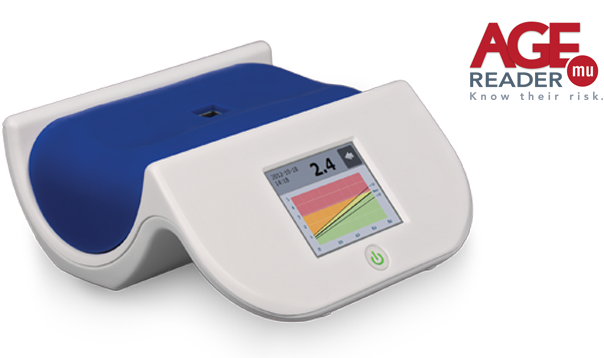Diagnoptics News
What's new?
Read all news items about the AGE Reader and Diagnoptics.
Important role of AGE Reader shown in recent international publications
Groningen, the Netherlands – July 30, 2012.
In the first half of 2012 a number of interesting papers about the AGE Reader have been published by international clinical research groups. This illustrates the expanding use of the AGE Reader in multiple clinical areas and countries. In this news item we would like to highlight a selection of the recently published papers.
The first two papers below illustrate the important role of the AGE Reader in predicting the cardiovascular risk, like many studies in the past. The third paper (from a Chinese research group) adds extra information to the AGE Reader measurement as a strong predictor of the development of diabetic complications. This paper describes a study in diabetes patients with foot ulcers.
Please visit our website with information for professionals for more details about these publications and a direct link to the abstracts.
Cardiovascular disease:
Relationship between tissue glycation measured by autofluorescence and pulse wave velocity in young and elderly non-diabetic populations. Watfa G. et al. Diabetes Metab. 2012 Jun 13. Epub.
Younger non-diabetic subjects exhibit a different correlation profile between AGEs accumulated in skin and cfPWV as an index of arterial stiffness compared with elderly subjects. AGEs were significantly associated with cfPWV in younger individuals, but not in the elderly.
Advanced glycation end product associated skin autofluorescence: A mirror of vascular function? Hofmann B. et al. Exp Gerontol. 2012 May 12. Epub
In conclusion we have found that skin autofluorescence and pulse wave velocity as non-invasive parameters significantly correlate with the AGE contained in graft material and therefore are strong predictors of vessel AGE modifications in patients with coronary heart disease.
Diabetes:
Elevated skin autofluorescence is strongly associated with foot ulcers in patients with diabetes: a cross-sectional, observational study of Chinese subjects. Hu H. et al. J Zhejiang Univ Sci B. 2012 May;13(5):372-7.
Skin AF is independently associated with diabetic foot ulcerations. It might be a useful screening method for foot ulceration risk of diabetic patients.
Latest news items
Would you like to learn more about our products? Request any information you wish to receive here.

If you want to receive the newsletter with information about DiagnOptics' products, please send us your email address.
More information about Diagnoptics.
Information on Diagnoptics' products and Advanced Glycation Endproducts.
Information about Advanced Glycation Endproducts, the AGE measurement and clinical validation.